Aggressive Growth Portfolio
-
OVERVIEW
Objective
Aggressive Growth Portfolio seeks to achieve high (greater than the stock market as a whole), long-term appreciation in the value of its shares.Strategy
Under normal market conditions, the Portfolio invests in stocks and stock warrants of U.S. and foreign companies that are expected to have a higher profit potential than the stock market as a whole and whose shares are valued primarily for potential growth in revenues, earnings, dividends or asset values rather than for current income.Reasons to Consider
-
1
Higher Appreciation Potential - Aggressive Growth Portfolio intends to hold stocks from at least twelve industry groups and within each industry group ordinarily holds large-, mid- and small-capitalization companies. Such companies may include those involved in technology, medicine, capital goods, natural resources, energy, construction, transportation, finance, entertainment or service, those developing or exploiting new industries, products, services or markets, or those whose shares are otherwise believed to be undervalued.
- 2
Fully Invested in the Stock Market at All Times - Frequent switching of capital into and out of the stock market greatly magnifies the risk of investing in stocks. Active switchers may suffer losses when the stock market declines and then miss out on profits when the market recovers. The result is that losses – not profits – compound. By staying fully invested in stocks at all times, the Portfolio avoids the unnecessary hazards of switching. This policy creates greater potential for higher appreciation in the long run.
-
1
-
PERFORMANCE
Performance data quoted represents past performance and does not guarantee future results. The investment return and principal value of an investment will fluctuate so that an investor's shares, when redeemed, may be worth more or less than their original cost. Investment performance, current to the most recent month-end, may be lower or higher than the performance quoted. It can be obtained by calling (800) 531-5142. Performance data shown with load reflects the Class A shares maximum sales charge of 5.00% and the Class C shares maximum deferred sales charge of 1.00%. Performance data shown as no load does not reflect the current maximum sales charges. Had the sales charge been included, the Portfolio's returns would be lower. All results are historical and assume the reinvestment of dividends and capital gains.
Historical Performance: Annual Returns Since Inception
Average Annual Total Returns (as of September 30, 2025)
YTD 1 Year 5 Years 10 Years 15 Years Inception Class I 30.51% 42.04% 23.69% 17.88% 15.65% 12.03% Class A (Load) 23.75% 34.60% 22.12% - - 17.68% Class A (No Load) 30.26% 41.69% 23.38% - - 18.33% Class C (Load) 28.54% 39.64% 22.47% - - 17.45% Class C (No Load) 29.54% 40.64% 22.47% - - 17.45% Dow Jones Industrial Average 10.47% 11.50% 12.98% 13.50% 12.79% 10.76% S&P 500 14.83% 17.60% 16.47% 15.30% 14.64% 10.75% Expense Ratios Class I Class A Class C Gross Expense Ratio 1.21% 1.46% 2.21% For the year ended January 31, 2025 as stated in the Fund’s Prospectus, dated May 30, 2025.
-
DIVIDENDS & DISTRIBUTIONS
Record Date: Wednesday, December 3, 2025
Reinvestment Date: Thursday, December 4, 2025
Class I Class A Class C Ordinary Income Dividends .000930 - - Capital Gain Distributions (long-term) .039230 .039230 .039230 Capital Gain Distributions (short-term) .003150 .003150 .003150 Qualified Dividends (included in Ordinary Income Dividends) TBD TBD TBD Reinvestment Price 138.22 137.13 125.74 Dividends Earned on U.S. Treasury Securities TBD TBD TBD > Historical Dividends and Distributions
> 2024 Mutual Fund Tax Guide
> 2024 Supplemental Tax Information -
FEES & EXPENSES
The table below describes the fees and expenses you would pay if you buy, hold and sell shares of Aggressive Growth Portfolio. You may pay other fees, such as brokerage commissions and other fees to financial intermediaries, which are not reflected in the tables and examples below. You may qualify for initial sales charge discounts on purchases of Class A shares if you and your family invest, or agree to invest in the future, at least $25,000 in the Portfolios of Permanent Portfolio Family of Funds. More information about these and other discounts is available from your financial intermediary and in “Your Investment — How Sales Charges are Calculated — Sales Charge Reductions and Waivers” in the Portfolio’s Prospectus and “Additional Purchase, Sale (Redemption) and Account Information — Initial Sales Charges on Class A Shares” in the Portfolio’s Statement of Additional Information.
How Sales Charges Are Calculated
Shareholder Fees
(fees paid directly from your investment)Class I Class A Class C Maximum Sales Charge (Load) Imposed on Purchases (as a percentage of offering price) None 5.00% None Maximum Deferred Sales Charge (Load) (as a percentage of the lower of original purchase price or sale proceeds) None 1.00%1 1.00%1 Annual Portfolio Operating Expenses
(expenses that you pay each year as a percentage of the value of your investment)Management Fees 1.19% 1.19% 1.19% Distribution and/or Service (12b-1) Fees —% .25% 1.00% Other Operating Expenses .02% .02% .02% Total Annual Portfolio Operating Expenses
1.21% 1.46% 2.21% 1For Class A shares, a contingent deferred sales charge (“CDSC”) of 1.00% applies on certain redemptions made within one year following purchases of $1 million or more made without an initial sales charge. For Class C shares, a CDSC of 1.00% applies to shares that are redeemed within one year of purchase.
-
LITERATURE

